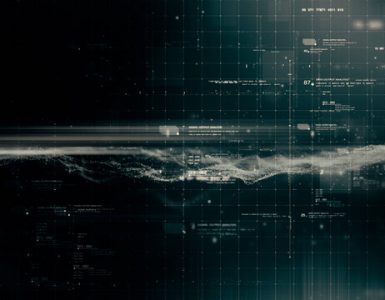As a DevOps engineer in 2024, you find yourself at the epicenter of a rapidly evolving technology landscape. While grappling with challenges like shortened development cycles, increased release velocity, and complex infrastructures, new methodologies promise to enhance development and operations.
You’ve likely heard terms like AIOps, MLOps, and LLMOps thrown around. But what do they mean? How are they relevant to you as a DevOps engineer? In this mini guide by Talent500, we will throw light on this term and provide you with a resource to make sense of these emerging practices and make decisions for you and your organizations.
Let’s get started:
Basics Of AIOps, LLMOps, And LLMOps From DevOps Point Of View
AIOps refers to leveraging AI for IT Operations optimization via automation, prediction, consolidation and insight generation. MLOps focuses on streamlining ML model continuous development and deployment leveraging DevOps style practices. LLMOps involves efficiently operationalizing large language models like GPT-4 tailoring model ops methods to the unique context.
These emerging approaches hold vast potential for enhancing data-driven decision making, scaling AI, and responsibly tapping revolutionary models like GPT-4. As a DevOps leader, evaluating their applicability against your operational challenges and readiness is key before adoption.
Let’s explore an in-depth overview of their capabilities, architectures, use cases and implementation guidance to inform your roadmap.
AIOps Core Capabilities
- Real-time data analysis altering on thresholds
- Predictive insights identifying failure patterns
- Automated root cause analysis using event correlation
- Ticket and alarm consolidation into single underlying issues
- Intelligent ticket assignment and incident remediation
It centers on amplifying human capability via advanced analytics spanning correlation detection, heuristics and machine learning to extract signals from noise.
MLOps Core Capabilities
- ML pipeline automation end-to-end
- Model packaging, portability and reproducibility
- Rapid experimentation and continuous delivery
- Scalable and reliable model deployment
- Ongoing performance tracking and governance
It introduces DevOps style rigor and automation into chaotic ML ops cycles accelerating productionisation.
LLMOps Core Capabilities
- Efficient multi-billion parameter model training
- Tracking key training performance metrics
- Experiment lineage tracking
- Establishing model benchmarking rigor on QA metrics
- Optimized deployment infrastructure planning
- Oversight for responsible model behavior
It focuses on tailored MLOps methods fitting the scale, uncertainty and coordination demands of industrial grade models like GPT-4.
Adoption Levers
- Quick win AIOps pilots proving credibility
- Foundational skill building across data and cloud
- Expanding analytics sophistication overtime
- MLOps adoption securing existing models
- Strategic LLMOps leveraging partnerships
Essentially, a sequenced roadmap concentrating efforts pays dividends spanning cost optimization to responsibly surfing the next technology wave.
AIOps Explained For DevOps

AIOps platforms ingest IT telemetry data leveraging a multi-tier architecture for elastic scalability and real-time predictive insights via an array of advanced analytics techniques. Integrating it into DevOps environments requires instrumentation, unified logging and exposure of analytical insights via APIs.
It delivers value across a number of use cases:
- Threshold based alerts on infrastructure metrics
- Automated ticket classification and assignment
- Predictive analytics identifying failure patterns
- Event and alarm consolidation revealing underlying root causes
- Proactive incident remediation via heuristics and machine learning
- Optimizing capacity planning leveraging historical usage correlations
- Real-time cloud cost anomaly detection and recommendations
However, fragmented data, skill gaps, cultural inertia and technical debt are common adoption barriers requiring mitigation. Debugging black boxes also introduces opacity without explainability standards.
Microsoft, Comcast and Digitata are examples of AIOps adoption driving significant stability, cost and productivity benefits proving its immense potential.
MLOps Explained For DevOps

(Credits)
MLOps introduces consistency in inherently chaotic ML application development, testing and deployment bringing rigor at scale. It enables continuous integration style experiment velocity while also managing model integrity post deployment.
This manifests in capabilities like:
- One click training and deployment pipelines
- Standardized model packaging and reproducibility
- Centralized model performance benchmarking
- Contextual model accuracy and data drift tracking
- Monitoring across technical, business KPIs
- Mechanisms for feedback loops and guardrails
To adopt MLOps, DevOps teams need to treat models as first class citizens in CI/CD pipelines, create containers for smooth deployment and align incentives between data scientists and IT operations for collaboration.
Fragmented open source model development tools, lack of industry standards in nascent ML space and cultural misalignments are common hurdles in the adoption journey. But returns can prove highly rewarding.
Netflix, Spotify and Microsoft demonstrate some inspirational successes leveraging MLOps principles realizing orders of magnitude in productivity, reliability and velocity gains.
LLMOps Explained For DevOps

(Credits)
LLMOps refers to specialization of model ops tailored to operationalize industrial grade foundations like GPT-4 which exceed billions of parameters, have higher uncertainty, leverage different neural architectures like transformers and require custom hardware.
Some of its distinct focus areas include:
- Mapping training datasets to model use case
- Tracking experiments with hyperparameter combinations
- Optimized model compression for cost effective deployment
- Establishing rigorous benchmarking criteria
- Monitoring model behavior changes post deployment
- Building oversight mechanisms to prevent harmful failure modes
For integrating LLMOs, DevOps teams need to customize infrastructure planning to leverage accelerators like GPUs, tailor scaling capabilities for production workloads and institute responsible AI governance standards.
Key challenges here revolve around computational demands, curating unbiased data at scale, black box explainability issues and monitoring model blindspots.
Engaging in partnerships with expert AI labs like DeepMind, Anthropic and HuggingFace will help pioneer best practices with significant upside for all early adopters.
Comparing Ops Capabilities
While AIOps, MLOps and LLMOps target different domains, common threads bind them. All three tap sensing, analytics and intelligence generation for some optimization goal leveraging abundances of data and computing.
However, distinctions span intended users, required skills, techniques employed, monitoring focus and architectural choices currently. We see significant synergies emerging overtime erasing dividing lines enabling integrated AI ops capabilities.
Applicability
- AIOps: IT Infrastructure and services
- MLOps: Full machine learning model development life cycle
- LLMOps: Large language models
Monitoring and Measurement
- AIOps: Infrastructure telemetry and events
- MLOps: Model accuracy, explainability and drift
- LLMOps: Training patterns and model behavior in deployment
Users and Access
- AIOps: IT Operations and Site Reliability Engineers
- MLOps: Data scientists, ML researchers and engineers
- LLMOps: Model researchers, Linguists, Conversational interface developers
Key Techniques
- AIOps: Correlation, anomaly detection, prediction
- MLOps: Full spectrum ML algorithms and specialized ops methods
- LLMOps: Primarily transformers and distributed training optimizations
As boundaries increasingly blur, integrated AI ops capabilities become feasible leveraging unified data, interchangeable skills and reusable tooling. Responsible development, robust monitoring and graceful value delivery remain guiding principles throughout.
Adopting AIOps, LLMOps, And LLMOps
Evaluating use case fit, gauging organizational readiness across skill, infrastructure and cultural dimensions as well as framing adoption roadmaps tethered to sequenced capability building milestones and quick wins is key to de-risking programs.
Conduct hypothesis driven AIOps experiments in costly domains plagued by incidents using MVP approach to establish credibility quickly. Independently invest in skills, data and platforms as enablers while expanding analytics sophistication across descriptive to predictive use cases over time. Once repeatability is evidenced, graduate to institutionalizing rigor for existing models via MLOps expanding capability domain before strategic plays to tap frontier innovations responsibly.
This creates a flywheel where early successes fund progress across assets to attempt bolder experiments leveraging external stimulus while always keeping responsible development at the core. Committed executive sponsorship, change evangelization both top down and bottom up combined with lean but focused resourcing kicks this continuous capability improvement journey into effect.
AIOps, LLMOps, And LLMOps Implementation Explained For DevOps
Instrumenting and ingesting quality data, establishing MVP models, rapidly iterating use case hypotheses leveraging automated tooling suites and instituting rigorous testing, monitoring and improvement protocols anchored in responsible performance tracking and oversight transforms possibility into consistent impact.
Analytics and ML fundamentals like clean datasets, representative training samples, interpretable and generalizable minimum viable models, reproducible environments, tamper proof pipelines with graduated exposure dials, explainable system behaviors and continuous tuning mechanisms cannot be sacrificed at the altar of expediency.
Formative feedback loops spanning technical metrics like utilization, accuracy and drift to experiential indicators captured from users and businesses both aid iterative enhancement dashboards. Institutionalized and democratized ideation, upskilling, job rotations that immerse cross functional teams into adjacent domains fosters modern skill stacks for integrated AI ops.
Extending existing CI/CD automation suites to data and models while proactively tackling latent cultural inertia through motivation and incentive alignment allows the flywheel to spin faster with each turn.
Future Outlook
Across AIOps, MLOps and LLMOps we foresee increased unification, leveraging of Kubernetes based platforms enabling portability, accelerated AutoML advancements expanding access and scale as well as responsible oversight guardrails around factors like transparency, explainability, accountability, fairness and robustness becoming deeply embedded.
Technological possibilities will continue expanding exponentially although purposeful alignment to benefit all human stakeholders preventing harmful overreach remains the north star guiding sustained responsible innovation.
With increasing integration, flexibility and democratization, business teams need to play active roles in requirements elaboration, rapid testing, user experience assessment and continuous prioritization while technology teams concentrate on engineering excellence and generative creativity within defined constraints.
This partnership manifesting via API interfaces and low code configuration layers minimizes months long requirements phase mismatches giving way to shorter validate-enhance cycles and empowered outcome driven teaming.
Ready to find a high paying job with remote work flexibility?
Signup on Talent500 now!






Add comment